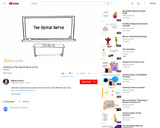
Short video on the anatomy of a spinal nerve for anatomy and physiology.
- Subject:
- Anatomy/Physiology
- Applied Science
- Health, Medicine and Nursing
- Life Science
- Material Type:
- Activity/Lab
- Author:
- Dr. Bruce Forciea
- Date Added:
- 04/05/2018

Short video on the anatomy of a spinal nerve for anatomy and physiology.
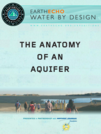
This design challenge moves your students from passive to active learners through a cross-curricular, hands-on team challenge in direct correlation to real-world issues of water conservation. Through this lesson, students in grades 6-8 will create a model of an aquifer to understand the structure of aquifers, how aquifers impact our freshwater supply and groundwater in regards to the water cycle.
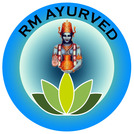
This video tells about description of gross anatomy of eye described in Ayurveda
#Ayurveda #eayurveda #elearning #eclasses #Shalyakya #anatomy of eye #cbpacs.
Ayurveda is the ancient science and still its effective and time tested since long. Sushruta is considered as Godfather of surgery till date. Sushruta Samhita is mainly focuses on Shalya tantra (Surgery of Ayurveda) and also Shalakya tantra which includes Ophthalmology, ENT and densitry. Eye is described in most elaborative and scientific manner in ayurveda. Anatomy and description of eye diseases simulates with modern ophthalmology. As in ophthalmology classification based on structure eg disease of the lids, conjunctiva, cornea etc . Same way diseases are classified as diseases of the vartma, shuklamandala, krishna mandala etc.
Also watch
https://youtu.be/az1VKtO84Co
https://youtu.be/KUg-fdepP2M
https://youtu.be/_6VRSO_HX54
https://youtu.be/9DXw0_0Nrcg
https://youtu.be/Lm9yGT6HTA8

This resource is a video abstract of a research paper created by Research Square on behalf of its authors. It provides a synopsis that's easy to understand, and can be used to introduce the topics it covers to students, researchers, and the general public. The video's transcript is also provided in full, with a portion provided below for preview:
"Citation rates and journal impact factor are the most widely used measures of influence in the academic world. But true impact extends well beyond the sphere of research. While quantifying this influence has remained incredibly challenging, social media and the alternative metrics its supplies are beginning to change that. In a new study reported in The American Journal of Sports Medicine, researchers looked at how these “altmetrics” correlate with traditional measures of impact in the field of orthopedics. Their findings point to the types of studies and publication venues that attain the greatest reach. The authors of the study analyzed 496 articles published across five high-impact journals in 2016: The Journal of Bone and Joint Surgery; Clinical Orthopaedics and Related Research; Acta Orthopaedica; Knee Surgery, Sports Traumatology, Arthroscopy; and The American Journal of Sports Medicine..."
The rest of the transcript, along with a link to the research itself, is available on the resource itself.
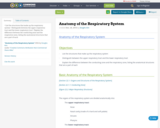
• List the structures that make up the respiratory system
• Distinguish between the upper respiratory tract and the lower respiratory tract
• Explain the difference between the conducting zone and the respiratory zone, listing the anatomical structures that are a part of each
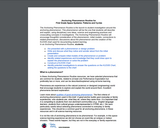
The Anchoring Phenomenon Routine is the launch to student investigation around the anchoring phenomenon. This phenomenon will be the one that students will describe and explain, using disciplinary core ideas, science and engineering practices and crosscutting concepts in investigations. The Anchoring Phenomenon Routine will encourage thoughtful consideration of the phenomenon, initial models, connections to related phenomenon, discussions about the phenomenon and the creation of the KLEWS chart used for documenting student learning. In an Anchoring Phenomenon Routine, students:
● Are presented with a phenomenon or design problem
● Write and discuss what they notice and wonder about from the initial presentation
● Create and compare initial models of the phenomenon or problem
● Identify related experiences and knowledge that they could draw upon to explain the phenomenon or solve the problem
● Construct a KLEWS Chart
● Identify potential investigations to answer the questions on the KLEWS Chart, adding the questions to the chart
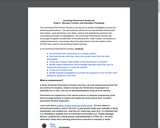
The Anchoring Phenomenon Routine is the launch to student investigation around the anchoring phenomenon. This phenomenon will be the one that students will describe and explain, using disciplinary core ideas, science and engineering practices and crosscutting concepts in investigations. The Anchoring Phenomenon Routine will encourage thoughtful consideration of the phenomenon, initial models, connections to related phenomenon, discussions about the phenomenon and the creation of the KLEWS chart used for documenting student learning. In an Anchoring Phenomenon Routine, students:
● Are presented with a phenomenon or design problem
● Write and discuss what they notice and wonder about from the initial presentation
● Create and compare initial models of the phenomenon or problem
● Identify related experiences and knowledge that they could draw upon to explain the phenomenon or solve the problem
● Construct a KLEWS Chart
● Identify potential investigations to answer the questions on the KLEWS Chart, adding the questions to the chart
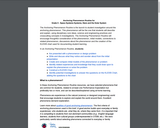
The Anchoring Phenomenon Routine is the launch to student investigation around the anchoring phenomenon. This phenomenon will be the one that students will describe and explain, using disciplinary core ideas, science and engineering practices and crosscutting concepts in investigations. The Anchoring Phenomenon Routine will encourage thoughtful consideration of the phenomenon, initial models, connections to related phenomenon, discussions about the phenomenon and the creation of the KLEWS chart used for documenting student learning. In an Anchoring Phenomenon Routine, students:
● Are presented with a phenomenon or design problem
● Write and discuss what they notice and wonder about from the initial presentation
● Create and compare initial models of the phenomenon or problem
● Identify related experiences and knowledge that they could draw upon to explain the phenomenon or solve the problem
● Construct a KLEWS Chart
● Identify potential investigations to answer the questions on the KLEWS Chart, adding the questions to the chart
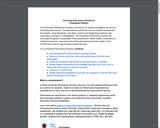
The Anchoring Phenomenon Routine is the launch to student investigation around the anchoring phenomenon. This phenomenon will be the one that students will describe and explain, using disciplinary core ideas, science and engineering practices and crosscutting concepts in investigations. The Anchoring Phenomenon Routine will encourage thoughtful consideration of the phenomenon, initial models, connections to related phenomenon, discussions about the phenomenon and the creation of the KLEWS chart used for documenting student learning. In an Anchoring Phenomenon Routine, students:
● Are presented with a phenomenon or design problem
● Write and discuss what they notice and wonder about from the initial presentation
● Create and compare initial models of the phenomenon or problem
● Identify related experiences and knowledge that they could draw upon to explain the phenomenon or solve the problem
● Construct a KLEWS Chart
● Identify potential investigations to answer the questions on the KLEWS Chart, adding the questions to the chart

The Anchoring Phenomenon Routine is the launch to student investigation around the anchoring phenomenon. This phenomenon will be the one that students will describe and explain, using disciplinary core ideas, science and engineering practices and crosscutting concepts in investigations. The Anchoring Phenomenon Routine will encourage thoughtful consideration of the phenomenon, initial models, connections to related phenomenon, discussions about the phenomenon and the creation of the KLEWS chart used for documenting student learning.
In an Anchoring Phenomenon Routine, students:
● Are presented with a phenomenon or design problem
● Write and discuss what they notice and wonder about from the initial presentation
● Create and compare initial models of the phenomenon or problem
● Identify related experiences and knowledge that they could draw upon to explain the phenomenon or solve the problem
● Construct a KLEWS Chart
● Identify potential investigations to answer the questions on the KLEWS Chart, adding the questions to the chart
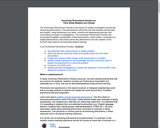
The Anchoring Phenomenon Routine is the launch to student investigation around the anchoring phenomenon. This phenomenon will be the one that students will describe and explain, using disciplinary core ideas, science and engineering practices and crosscutting concepts in investigations. The Anchoring Phenomenon Routine will encourage thoughtful consideration of the phenomenon, initial models, connections to related phenomenon, discussions about the phenomenon and the creation of the KLEWS chart used for documenting student learning.
In an Anchoring Phenomenon Routine, students:
● Are presented with a phenomenon or design problem
● Write and discuss what they notice and wonder about from the initial presentation
● Create and compare initial models of the phenomenon or problem
● Identify related experiences and knowledge that they could draw upon to explain the phenomenon or solve the problem
● Construct a KLEWS Chart
● Identify potential investigations to answer the questions on the KLEWS Chart, adding the questions to the chart
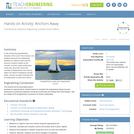
In this activity, students discover the relationship between an object's mass and the amount of space it takes up (its volume). Students learn about the concept of displacement and how an object can float if it displaces enough water, and the concept of density and its relationship to mass and volume.

This course focuses on the archaeology of the Greek and Roman city. It investigates the relationship between urban architecture and the political, social, and economic role of cities in the Greek and Roman world, by analyzing a range of archaeological and literary evidence relevant to the use of space in Greek and Roman cities (e.g. Athens, Paestum, Rome, Pompeii) and a range of theoretical frameworks for the study of ancient urbanism.
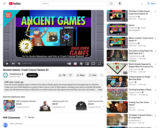
From the ancient Egyptian game of Senet to the Aztec’s Patolli, games have been played since the beginning of civilization. Today, your host Andre Meadows is going to take a look at a few of these games, including some that are actually still played today, and talk about how they’ve influenced our modern board and video games and why they have had such staying power.

This short video describes how the compression of Antarctic snow into ice captures air from past atmospheres. It shows how ice cores are drilled from the Antarctic ice and prepared for shipment and subsequent analysis.
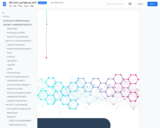
Introduction to Biotechnology II (BIOL1415), provides learners with a practical exploration of a regulated biotechnology workplace. This course is a continuation of Introduction to Biotechnology I (BIOL 1414), and the cornerstone for the Biotechnology Level-One Certificate, as it provides students ample opportunity to master entry-level laboratory workforce skills. This course builds on knowledge in biotechnology, chemistry, & biology, and provides workforce training in areas of regulatory documentation, equipment validation, and teamwork. The goals of this course are to develop core laboratory skills needed in a bioscience lab job; critical thinking and multitasking, teamwork and accountability, accuracy in calculations and experimental analysis, and demonstrate skills associated with working in a regulated laboratory workplace.
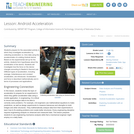
Students prepare for the associated activity in which they investigate acceleration by collecting acceleration vs. time data using the accelerometer of a sliding Android device. Based on the experimental set-up for the activity, students form hypotheses about the acceleration of the device. Students will investigate how the force on the device changes according to Newton's Second Law. Different types of acceleration, including average, instantaneous and constant acceleration, are introduced. Acceleration and force is described mathematically and in terms of processes and applications.
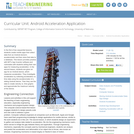
In the first of two sequential lessons, students create mobile apps that collect data from an Android device's accelerometer and then store that data to a database. This lesson provides practice with MIT's App Inventor software and culminates with students writing their own apps for measuring acceleration. In the second lesson, students are given an app for an Android device, which measures acceleration. They investigate acceleration by collecting acceleration vs. time data using the accelerometer of a sliding Android device. Then they use the data to create velocity vs. time graphs and approximate the maximum velocity of the device.
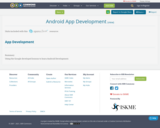
Using the Google developed lessons to learn Android Development.
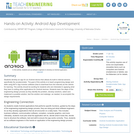
Students develop an app for an Android device that utilizes its built-in internal sensors, specifically the accelerometer. The goal of this activity is to teach programming design and skills using MIT's App Inventor software (free to download from the Internet) as the vehicle for learning. The activity should be exciting for students who are interested in applying what they learn to writing other applications for Android devices. Students learn the steps of the engineering design process as they identify the problem, develop solutions, select and implement a possible solution, test the solution and redesign, as needed, to accomplish the design requirements.